#stem cell injection treatment
Text
Trust the experts at Sarasota Sports Medicine to deliver exceptional results with Acoustic Wave Therapy in Sarasota. Let us help you break free from pain and rediscover the joy of movement with our effective and personalized treatment approach. Whether you’re an athlete seeking peak performance or someone looking for relief from chronic pain, our cutting-edge treatments can help you achieve your wellness goals.
Sarasota Sports Medicine
1400 Cattlemen Rd #103, Sarasota, FL 34232
(941) 927–0546
Official Website: https://www.sarasotasportsmed.com/
Google Plus Listing: https://www.google.com/maps?cid=1371921092750758233
Other Links
Acoustic Wave Therapy Sarasota : https://www.sarasotasportsmed.com/acoustic-wave-therapy
Back Pain Doctor Sarasota : https://www.sarasotasportsmed.com/back-pain
Deep Tissue Laser Therapy Sarasota : https://www.sarasotasportsmed.com/deep-tissue-laser-therapy
IV Nutrition Therapy Sarasota : https://www.sarasotasportsmed.com/iv-nutrition-therapy
Peptides for Shoulder Injury Sarasota : https://www.sarasotasportsmed.com/peptide-therapy
Prolotherapy Doctors Near Me : https://www.sarasotasportsmed.com/prolotherapy
Runner’s Knee Treatment Sarasota : https://www.sarasotasportsmed.com/knee-pain
Stem Cell Therapy Florida : https://www.sarasotasportsmed.com/stem-cell-therapy
Other Service We Provide:
Deep Tissue Laser Therapy
Chiropractic Adjustments
Dry Needling
Injection Therapies
Injection Therapies
Performance Conditioning
Acoustic Wave Therapy
IV Nutrition Therapy
Follow Us On
Twitter: https://twitter.com/SarasotaSports
Pinterest: https://www.pinterest.com/SarasotaSportsMedicine/
Instagram: https://www.instagram.com/sarasotasportsmedicine/
#Acoustic Wave Therapy Sarasota#Physical Therapy Sarasota FL#Back Pain Doctor Sarasota#Deep Tissue Laser Therapy Sarasota#IV Nutrition Therapy Sarasota#Peptides for Shoulder Injury Sarasota#Prolotherapy Injections Sarasota#Runner’s Knee Treatment Sarasota#Stem Cell Therapy for Shoulder Injuries Sarasota FL
0 notes
Text
Embark on a journey of healing and regeneration with stem cell therapy in Orlando. Utilizing cutting-edge techniques, stem cell injections offer targeted treatment for various conditions, promoting tissue repair and pain relief. Discover the transformative potential of regenerative medicine, conveniently located near you for a rejuvenated quality of life.
#stem cell therapy orlando#stem cell therapy orlando florida#stem cells near me#stem cell injection#stem cell treatment near me#stem therapy
0 notes
Text

youtube
#tv show#global news#world news#cancer#cancer survival#hope#faith#children#family#cancer drugs#stem cell treatment#stem cell transplant#stem cell injection#stem cell therapy#true story#youtube#hospitallife#chemotherapy#chemosorptive
0 notes
Text
"People living with diabetes might have a new hope. Scientists have tested a new drug therapy in diabetic mice, and found that it boosted insulin-producing cells by 700% over three months, effectively reversing their disease.
Beta cells in the pancreas have the important job of producing insulin in response to blood sugar levels, but a hallmark of diabetes is that these cells are either destroyed or can’t produce enough insulin. The most common treatment is regular injections of insulin to manage blood sugar levels.
But a recent avenue of research has involved restoring the function of these beta cells. In some cases that’s started with stem cells being coaxed into new beta cells, which are then transplanted into patients with diabetes. Researchers behind this kind of work have described it as a “functional diabetes cure.”
Now, scientists at Mount Sinai and City of Hope have demonstrated a new breakthrough. Previous studies have mostly involved growing new beta cells in a lab dish, then transplanting them into mice or a small device in humans. But this new study has been able to grow the insulin-producing cells right there in the body, in a matter of months.
The therapy involved a combination of two drugs: one is harmine, a natural molecule found in certain plants, which works to inhibit an enzyme called DYRK1A found in beta cells. The second is a GLP1 receptor agonist. The latter is a class of diabetes drug that includes Ozempic, which is gaining attention lately for its side effect of weight loss.
The researchers tested the therapy in mouse models of type 1 and 2 diabetes. First they implanted a small amount of human beta cells into the mice, then treated them with harmine and GLP1 receptor agonists. Sure enough, the beta cells increased in number by 700% within three months of the treatment. The signs of the disease quickly reversed, and stayed that way even a month after stopping the treatment.
“This is the first time scientists have developed a drug treatment that is proven to increase adult human beta cell numbers in vivo,” said Dr. Adolfo Garcia-Ocaña, corresponding author of the study. “This research brings hope for the use of future regenerative therapies to potentially treat the hundreds of millions of people with diabetes.”
The results are intriguing, but of course being an animal study means there’s still much more work to be done before it could find clinical use. So far, harmine alone has recently undergone a phase 1 clinical trial in humans to test its safety and tolerability, while other DYRK1A inhibitors are planned for trials in humans next year.
Perhaps most importantly, the team will soon experiment with combining beta-cell-regenerating drugs with others that modulate the immune system. Ideally this should help overcome a major hurdle: the immune system will continue attacking new beta cells as they’re produced.
The research was published in the journal Science Translational Medicine."
-via New Atlas, July 14, 2024
#diabetes#diabetic#insulin#blood sugar#type 1 diabeties#type 2 diabetes#medical news#medical research#drug trials#good news#hope
892 notes
·
View notes
Text
High Maintenance 101
Prissy Girl Beauty Regimens 🎀


my prissy girl guide to beauty services and building a beauty lifestyle that fits you 💗
Skincare:

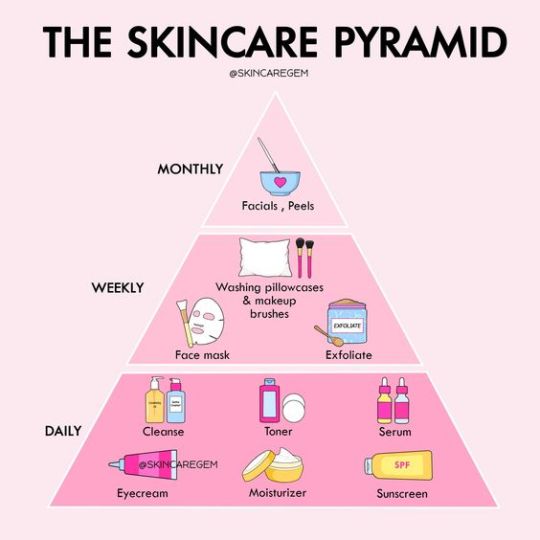
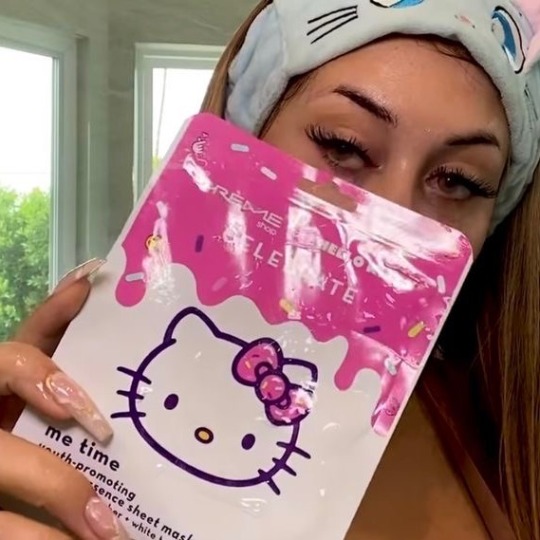
Essential Skincare Routine ❤︎︎
twice daily, in the morning and at night
daytime: gentle cleanser, toner, serum, eye cream, moisturizer, SPF
prep and protect skin
nighttime: double cleansing with oil and cleanser, exfoliation, treatments, moisturizer
wash away the day and help skin accept treatments and actives during your beauty sleep
products will change depending on skin type and goals, but sequence will more or less stay the same
Face Masks + Treatments ❤︎︎
Face Masks -
typically done at home 1-3x/week
clay, gel, mud, cream, liquid
my fav masks at home:
aha + bha liquid mask by the ordinary: a literal overhaul of my pores. it’s refining and helps reduce texture and hyperpigmentation. 1-2 x/week
korean modeling mask: i use this after doing everything in my routine. it’s super cooling and smooths my skin out. the low temp of the mask reduces flushing of my skin and helps the steps in my routine absorb better. 2-3 x/week
Treatments -
done either 1-3x/week and/or exclusively at night
consumer grade Retinols, AHAs, BHAs at high strength
little extra things i like to use to enhance my routine:
gua sha, ice pack, rose quartz roller, however often i choose
Facials ❤︎︎
done every 1-2 months by licensed estheticians
often includes exfoliation and extraction
Classic Facial: cleanse, extract, massage, moisturize
HydraFacials: extracts pores while infusing serums to boost skin’s vitamin and nutrient content
dry, dehydrated skin
Microdermabrasion: microabrasive tool removes outermost, textured, damaged layer of skin using suction to reveal a smooth and refined new layer of skin
sun damaged, aged, textured skin or skin with hyperpigmentation
Chemical Peel: application of medical grade AHA, BHA, Lactic Acid, Fruit Enzymes, or Retinol to peel away top layers of skin over the course of 1-2 weeks
pore refining, brightening, and anti-aging
after care is crucial. skin will be peeling and sensitivity to sun is increased. SPF MUST be used. it’s heavily advised that clients stay home for the first few days.
HydroJelly Facial: facial made of electrolytes, algae, organic white grain oat flour, rice flour, and white willow bark powder. leaving your skin hydrated, plump, and nourished. forms a vacuum-like seal that compresses facial contours.
there are 25 different hydrojelly pro masks for most skin concerns you may have, check here
More Facials ❤︎︎
Contouring Facial: sculpting, tightening, and lifting of facial muscles
LED Facial: uses LED light to soothe inflammation, aiding in acne healing and prevention
Vampire Facial: plumps skin and improves wrinkles by extracting blood, removing its platelets, then either re-injecting it into the skin or applying it topically
Diamond File Facial: finely ground diamonds resurface skin by filing to improve dark spots
Glass Skin Botox: multiple tiny botox injections just below the surface of the skin. alleviate fine lines, redness, texture, and more achieving glass skin
AquaGold Facial: microinjections that combine vampire facial methods, hyaluronic acid, botox, stem cells, antioxidants, vitamins, peptides, etc. improves fine lines, wrinkles, pores, pigmentation, acne scarring, dryness, tone, texture, skin elasticity, and more
cite
Hair:


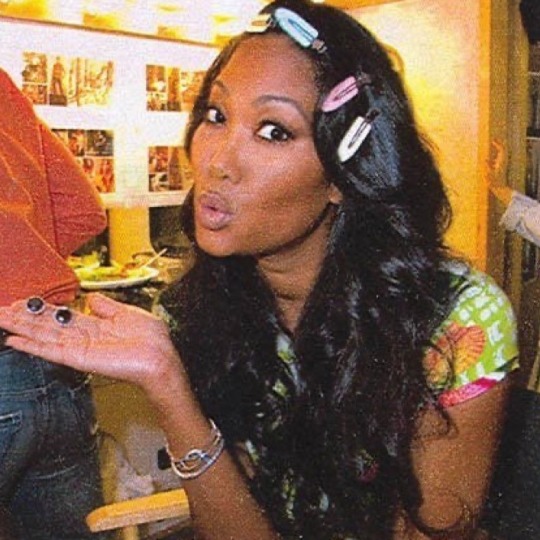
Hair Care ❤︎︎
Wash Routines:
curly textured: wash and condition every 2-3 weeks, deep condition every 1-2 weeks
straight: wash and condition every 2-3 days, deep condition every 2-3 weeks
Styling ︎❤︎︎
Hair should have a style everyday! At home hairstyling is limitless and really depends on your taste and lifestyle. The everyday woman does her own her once every 1-4 weeks using natural hair products, heat, or other tools.
Professional Stylists:
hair is styled every 1-3 months: uses heat to straighten or curl, extensions to lengthen and add volume, shears to maintain/attain a shape and length
trim ends: every 6-8 weeks
hair color: touched up roughly every 6-8 weeks (depending on how fast your hair is growing and how fast your color will fade)
Silk Press:
after a clarifying wash and deep conditioning, natural hair is straightened using flat iron and/or pressing comb, then usually curled in feathers or pin curls to preserve the style
lasts 3-4 weeks depending on maintenance
preserved by wrapping hair at night, keep hands out of hair, and using a wide toothed comb only
can be further styled with different kind of rollers, or with pin curls
Braids:
afrocentric hairstyles typically done to protect hair while maintaining beauty
lasts 3-8 weeks
styles include knotless braids, faux locs, stitch braids, french braids, etc
Extensions:
hair added to natural hair to enhance length or volume
can be done at home with patience and proper materials
sew-in extensions: (my personal fav) 1-2 months
your natural hair gets braided down flush to your scalp and the bundles are sewn on by the wefts in a flat pattern typically with a section of hair left out to cover the wefts $100-600
microlinks: up to 4 months
i-tip extension is added to hair using micropliers, clippers and loop tool. takes far longer than most extension methods but looks the absolute most natural $500-1000
tape-in extensions: up to a year, touch ups every 4-6 weeks
medical grade tape is used to attach extensions to small sections of hair $200-400
clip-in extensions: 3-6 months
extensions are clipped on by the wefts. the hair itself can last up to six months, but it’s not recommended to sleep, shower, or swim with the extensions in $50-100
Natural Styles:
all last roughly 1-2 weeks at most. allowing hair to completely DRY is crucial for these styles. your natural hair can be further changed in styles like buns, puffs, etc once dry
natural hair essentials: scalp oil, leave in conditioner, detangling brush, wide tooth comb, curling cream, styling gel, edge control and edge brush
wash n’ go
wash and detangle, then use leave in conditioner to keep hair moist. oil on the scalp and ends is recommended for growth and healthy ends
bantu knots
a traditionally african style where the hair is cleanly sectioned (usually parted in a cute pattern) and twisted into knots. style can be worn just like this or taken down for curls
braid/twist out
a specific pattern of curls is achieved after hair is twisted or braided with curl preserving products. end result depends on how big your twists or braids are
roller set
hair is sprayed with water and curl cream applied before roller of your choice is added. hair is left to dry usually overnight for springy well formed curls
Brows and Lashes:

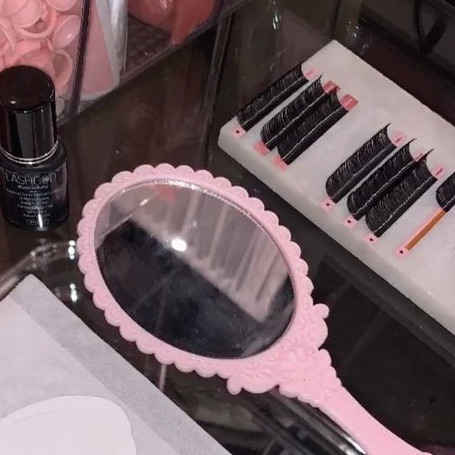
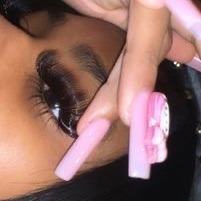
Brow Shaping ❤︎︎
in salon or at home
Waxing - every 3 weeks
Threading- every 2-3 weeks
Razor Shaping - weekly
Brow Enhancement ❤︎︎
Tinting - monthly
can be done at home or by pro in the salon
Microblading - every 1-3 years + annual touch ups, exclusively professional work
cosmetic tattooing using a manual tool with nearly invisible hair-like needles to inject pigment in brows to create your desired brow look
Lash Enhancements ❤︎︎
*done exclusively by professionals
Lifts - every 6 weeks
basically a perm for your lashes to curl them semi-permanently for lashes to appear longer
Lash Extensions - new set every 6-8 weeks, fill ins every 2-3 weeks depending on quality and style
false individual strands of lashes glued to natural lashes to create semi-permanent length and/or volume
lash baths: wet lashes and apply a small amount of gentle cleanser or a “lash bath” to lashes. cleanse lashes and eyelids for about 10 seconds. hold a towel under your eye and use a nozzle bottle to flush soap and bacteria from lashes then dry with a disposable lint free towel. finish by brushing your lashes with a spoolie. daily.
Lash Styles:
Classic: one lash on each fan, thin lashes
Volume: fluffier lashes with more lashes on each fan
Hybrid: uses classic and volume lashes to make an alternated look
Russian: volume lashes made with very thin individuals, 5-6 extensions per natural lash, fanned out look
DIY Lash Extensions - lasts about a week (sometimes longer)
lash fragments or individual wisps are glued either under the lashes or on the lash line. KISS Falscara is a product that makes this concept simple and easy
Nails:
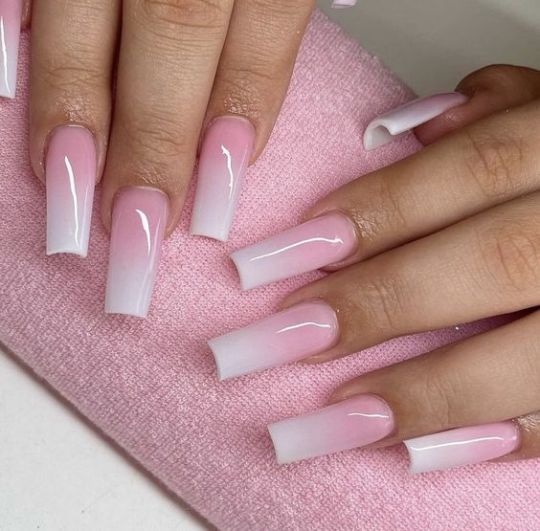
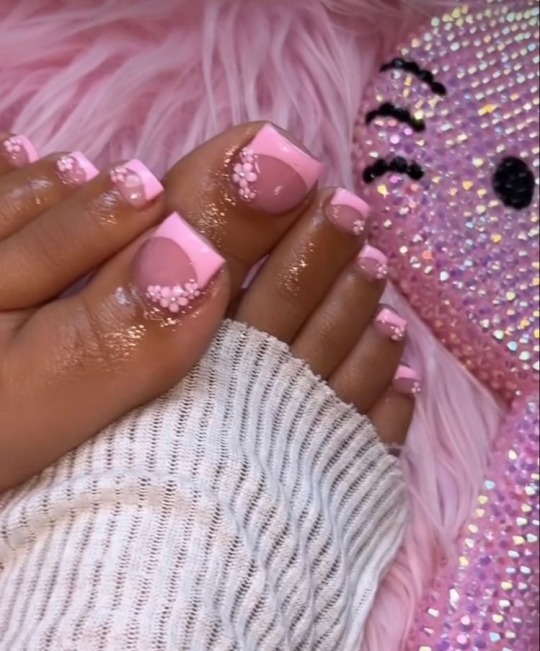
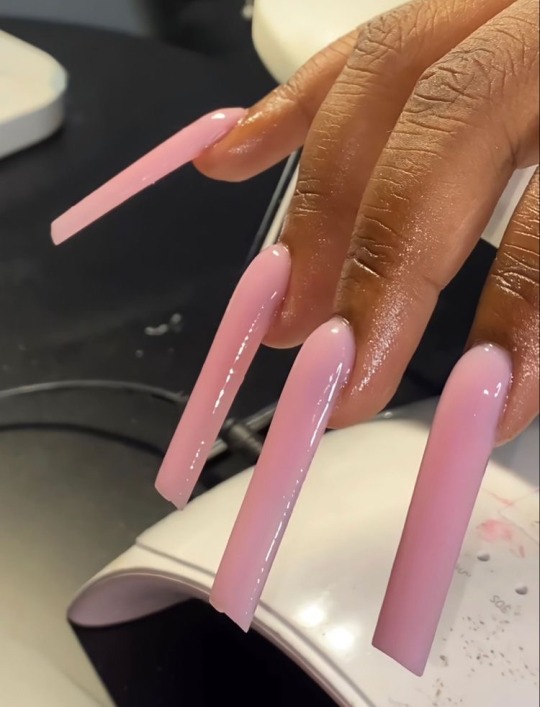
all these services can be done at home with the proper materials and KNOWLEDGE
Classic Manicure ❤︎︎
every 1-2 weeks
nail service that consists of soaking hands in warm soapy water then drying them. nails are trimmed, filed, and buffed. cuticles are pushed back before applying nail polish (base coat, color, top coat), then finally cuticle oil is applied.
nails can be enhanced with rhinestones, glitter, or charms and attached with uv gel or nail glue
my fav styles are pink, cream, white, black and any french tip using those colors
Pedicure ❤︎︎
every 2-4 weeks
sister to the classic manicure, but can be upgraded depending on materials. steps are similar to manicure, except feet are scrubbed and exfoliated before feet are washed and dried to apply nail color
regular polish, acrylic, or gel can be used on toenails
Gel or Shellac Mani ❤︎︎
every 2-3 weeks
same process as the classic manicure, but traditional nail polish is replaced with uv base coat, gel or CND Shellac polish, then uv top coat that’s cured in a UV or LED lamp
longer lasting and more strong/3d than classic mani and is typically removed by soaking in acetone
Apres Gel-X Nails ❤︎︎
every 2-3 weeks
my personal fav at home nails using the artme yoko matsuda nails. after doing a classic mani sans polish, you apply a dehydrator and primer to prep nail for gel. then you apply builder gel to your natural nail and cure. then you apply that same builder to the nail extension after etching it using an electric drill or acetone. marry the gel to your nail and cure. then just shape to your liking and top with uv top coat. tutorial here
Acrylic Nails ❤︎︎
every 2-3 weeks, nails are fully grown out after 6 weeks
manicure done with liquid monomer and acrylic powder to build and extend natural nail, then polished with color or just a top coat if desired
Russian Mani ❤︎︎
every 4-5 weeks
essentially a gel manicure, but more invasive. the eponychium is snipped away so polish can be applied more closely and flush to the cuticle. this aids in visuals and longevity
service is seen as risky because the skin is more susceptible to fungal or bacterial infection. this is actually how i do my nails at home.
Body:


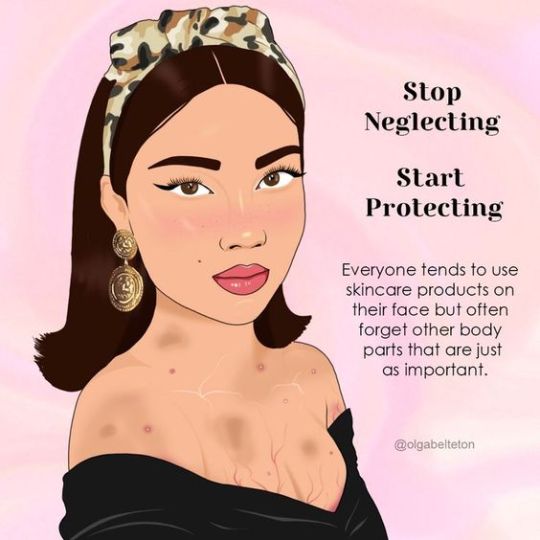
Bathing ❤︎︎
2x daily
self explanatory, we all know how to bathe. i have other posts that talk about my shower and bath routines.
use a gentle cleanser then a scented body wash to complement perfume and smell fresh all day.
if needed, you can use body soaps with actives like aha, bha or retinol to exfoliate or treat skin at night
exfoliation - 2-3x/week. using scrubs, loofahs, bath brushes, etc.
Hair Removal ❤︎︎
shaving - 2-3x/week
waxing - every 3-5 weeks
sugaring - monthly
ipl device - a device that uses light therapy to slowly destroy hair follicles and unwanted pigment in skin. i use mine after every 5-6 shaves but i could really use it more often.
Vajacial ❤︎︎
1-2x/month
a “facial” for your lady area
the esthetician will first wax, then cleanse and apply an enzyme exfoliant. then they extract any blackheads or ingrown hairs from the area before applying a soothing mask usually in the jelly form.
Moisture and Hydration ❤︎︎
body cream or lotion - daily right after bathing to hydrate skin
body oil - daily to seal in moisture and protect skin from debris and dryness
masks - weekly to address particular skin concerns
ex. when i was having eczema flare ups on my back, i used a dead sea mud mask every 1-2 weeks to help treat it
done at home or at spa
glycolic, clay, mud, salicylic, etc.
Enhancement Procedures:


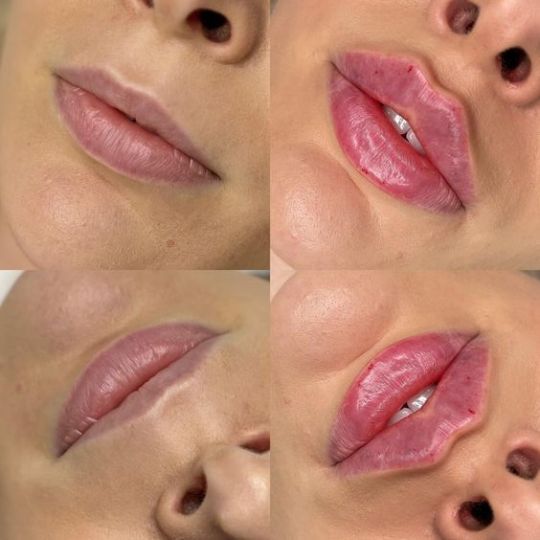
the goal is to look younger and balance facial features. all these services are exclusively done by professionals usually in a medspa and are widely considered luxury.
Botox ❤︎︎
every 6-8 months; between brows, smile lines, outer corners of eyes, etc
discourages muscle movement to reduce wrinkles
Lifts ❤︎︎
lasts about 10 years; face, neck, brow, eyelids
skin is lifted to desired look, then excess skin is removed
Fillers ︎❤︎︎
every 6-12 months; under-eye, lips, jawline, wrinkle sites, cheekbones
injects acids (usually naturally occurring) like Hyaluronic Acid and Calcium Hydroxylapatite to add volume to your face
Body Contouring ❤︎︎
every 2-4 months until desired results are achieved
non invasive liposuction to achieve desired physique
CoolSculpting - cryolipolysis freezes fat cells for the body to the metabolize and and remove them
SculpSure - essentially the same as CoolSculpting, but uses heat and laser technology to destroy fat cells
Laser Hair Removal ❤︎︎
every 5-6 weeks; bikini, underarms, legs, arms
touch ups done every 1-2 years
hair growth is inhibited by exposing follicles to light at frequencies that kill them
Building the Regimen 🗒️💕:



when making appointments with your “glam squad” you can stagger your services by week depending on what’s being done. for example you can get your mani and pedi done one week. then your facials, brows and lashes another week.
Things to Keep in Mind 💭💞:
these frequencies won’t be the same for everyone depending on personal wants, budgets, etc. but will most likely land somewhere in the ranges i gave. if you need touch ups or redos any sooner than i mapped out, then the service most likely was of poor quality.
anything done at home may or may not be up to the level of detail and longevity as salon or spa work. if you see yourself doing the majority of your beauty maintenance at home, this can save money but may end up taking more time than professional services. so it’s a give and take.
More Resources:
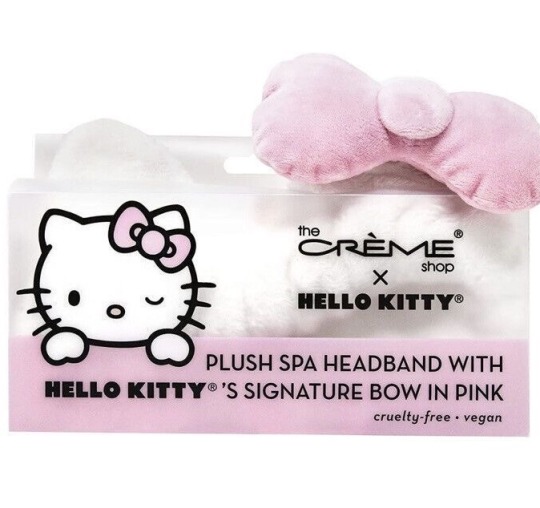


manage your routines, services and products using a beauty binder
a look at my skincare routine
at home beauty treatments for the summer
my hair care routine at home
pretty on purpose by @shefromhouston
monthly beauty routine by @angeljpg
dream girl routines by me
#the prissy girl agenda#dream girl journey#prissy lifestyle tips 💕🎀#dream girl routines#masterpost#my posts#skincare
1K notes
·
View notes
Text
The Food and Drug Administration has given the go-ahead for a late-stage clinical trial of an injectable stem cell product that could give new hope to millions of patients suffering from lower back pain caused by degenerative disc disease (DDD). Up to 400 patients with mild to moderate DDD are expected to enroll in the Phase 3 study later this year.
The trial is being conducted by DiscGenics, a Utah-based biopharmaceutical company that is developing new cell-based therapies for musculoskeletal conditions. It’s one of the first late-stage studies of a stem cell product to win approval from the FDA, which has been openly skeptical of cell-based therapies due to lack of evidence proving their safety and efficacy in clinical trials.
The only stem cell therapies currently approved by the FDA are used to treat sickle cell disease and some cancers. Approval of a stem cell product to treat degenerative discs would be a big step forward for regenerative medicine, and give patients an alternative to fusions and other invasive surgical procedures.
“The FDA has been very familiar with our process, our product, and the chemistry, manufacturing and controls for quite some time,” says Flagg Flanagan, CEO and Chairman of DiscGenics. “We feel really good about where we are in terms of the patient reported outcomes. But most importantly about the safety. We feel like this cell is extremely safe to be used on human patients and we're feeling really, really good that we can help a lot of people.” (Read more at link)
Well there’s a little hope for actual treatment for my lower back pain.
#chronic pain#lower back pain#degenerative disc disease#disability#spoonies#stem cell research#study#article
24 notes
·
View notes
Text
"Five people have gone into remission thanks to advancements in medicine — and a sixth patient may also now be free of HIV.
One of the biggest breakthroughs in HIV/AIDS prevention in recent years is the widespread use of PrEP (pre-exposure prophylaxis).
This drug therapy, approved by the Federal Drug Administration in 2012, has been a key player in preventing HIV transmission through sex or injection drug use. Antiretroviral drugs, such as PrEP, also slow the replication of the virus and prevent it from progressing to AIDS.
Although PrEP has become a more accessible treatment for the virus, scientists have been hurriedly working towards cures for HIV for decades — and we’re finally seeing some results.
In February of this year, scientists in Germany confirmed a fifth-ever patient had been cured of HIV after receiving stem cell transplants that include genetic mutations that carry a resistance to HIV.
But it looks like a sixth patient may soon be able to join this very exclusive club.
The man, referred to as the “Geneva patient,” underwent a stem cell transplant after cancer treatment, though these cells did not include the HIV-resistant genetic mutation.
Still, he went off antiretroviral therapy for HIV in November 2021, and his viral load remains undetectable.
Instead, doctors are researching whether a drug called ruxolitinib may be partially responsible for his recovery.
Ruxolitinib decreases inflammation associated with HIV by blocking two proteins, JAK1 and JAK2. This helps kill off “reservoir cells” that lay dormant in the body and have a potential to cause rebounds in patients with HIV.
Experts say the AIDS crisis can end by 2030 across the globe — as long as leaders prioritize this goal.
A new report from UNAIDS shows a clear, optimistic path to ending the AIDS crisis. (This looks like a 90% reduction in cases by 2030.)
The organization’s report includes data and case studies that show that ending AIDS is a political and financial choice — and that governments that have prioritized a path towards progress are seeing extraordinary results.
By following the data, science, and evidence; tackling inequality; and ensuring sufficient and sustainable funding across communities, the global community could wipe out the AIDS pandemic by the end of the decade.
The report demonstrates that progress has been strongest in the countries and regions that have the most financial investments, like eastern and southern Africa, where new HIV infections have been reduced by 57% since 2010.
Investments in treatments, education, and access to care have also led to a 58% reduction in new HIV infections among children from 2010 to 2022 — the lowest number since the 1980’s.
Plus, the number of people on antiretroviral treatment around the globe has risen from 7.7 million in 2010 to 29.8 million in 2022.
The moral of the story? This goal can be achieved, if world leaders put their minds — and wallets — to it.
A region in Australia might be the first place in the world to reach the United Nations targets for ending HIV transmission.
Researchers believe that the central district of Sydney, Australia is close to becoming the first locality in the world to reach the UN’s target for ending transmission of HIV.
Specifically, new infections among gay men have fallen by 88% between 2010 and 2022. In fact, there were only 11 new HIV cases recorded in central Sydney last year, and almost all HIV-positive Australians are on antiretroviral drugs.
... "These numbers show us that virtual elimination of HIV transmissions is possible. Now, we need to look closely at what has worked in Sydney, and adapt it for other cities and regions across Australia.”
Namibia is ahead of schedule in UN targets to end HIV/AIDS.
Although the virus is still the leading cause of death in Namibia, the country is well on track to hit 95-95-95 UNAIDS targets before its 2030 deadline.
In Namibia, 92% of people know their HIV status, 99% of people living with HIV are on treatment, and 94% of people living with HIV who are on treatment are virally suppressed.
In addition to these exciting statistics, new infections have plummeted. The estimated rate of new HIV infections in Namibia is five times lower than it was in 2002, according to the Centers for Disease Control & Prevention.
These encouraging numbers are thanks to the investment and strategic response of PEPFAR, but also to the willingness of local governmental agencies and organizations to adhere to the UN’s Fast-Track approach.
Breakthroughs are being made in HIV vaccine therapies.
Long before we were all asking each other “Pfizer or Moderna?” about our COVID-19 vaccines, scientists have been researching the potential of mRNA vaccines in treating some of the world’s deadliest diseases — like HIV.
And with the success of our mainstream mRNA vaccines, an HIV inoculation remains a goal for researchers across the globe.
Last year, the National Institutes of Health launched a clinical trial of three mRNA vaccines for HIV, and similar studies are being conducted in Rwanda and South Africa, as well.
CAR T-cell clinical trials are underway to potentially cure HIV.
This spring, UC Davis Health researchers have dosed the second participant in their clinical trial, which poses the use of CAR T-cell therapy as a potential cure for HIV.
The study involves taking a participant’s own white blood cells (called T-cells), and modifying them so they can identify and target HIV cells, ultimately controlling the virus without medication.
The first participant in the study was dosed with anti-HIV T-cells last August, and the trial is the first of its kind to utilize this technology to potentially treat HIV.
Of course, the trials have a long way to go, and the lab is still preparing to dose a third participant for the study, but CAR T-cell treatments have been successful for lupus and forms of cancer in the past...
“So far, there have been no adverse events observed that were related to the treatment, and the two participants are doing fine.”
Guidance on how to reduce stigma and discrimination due to HIV/AIDS is reaching people around the globe.
While the stigma surrounding HIV and AIDS has significantly decreased — especially towards the LGBTQ+ community — with advancements in treatment and prevention, discrimination is certainly not gone.
While most people now understand HIV/AIDS better than they did decades ago, those most impacted by the virus (like gay men and low-income women and children) still face ongoing barriers to care and economic security.
It is vital to maintain awareness and education interventions.
After all, experts suggest that eliminating discrimination and stigma are key factors in reducing disease. And not eliminating stigma impedes HIV services, argues UNAIDS, “limiting access to and acceptance of prevention services, engagement in care, and adherence to antiretroviral therapy.”
Luckily, UNAIDS provides guidance on how to reduce stigma and discrimination in the community, workplace, education, health care, justice, and emergency settings.
The goal is to, of course, decrease stigma in order to decrease disease, but also to provide folks with the culturally significant support they need to live safe, integrated lives — with or without disease.
For instance, a 2022 study conducted in Northern Uganda showed that local cultural knowledge passed through Elders was a successful intervention in reducing HIV-related stigma among young people.
“Research in school settings has shown that the use of local cultural stories, songs, myths, riddles, and proverbs increases resilient coping responses among students and strengthens positive and socially accepted morals and values,” the study’s discussion reads.
So, while an uptick in acceptance gives us hope, it also gives us a directive: Keep telling the accurate, full, and human stories behind HIV/AIDS, and we’ll all be better for it. "
-via GoodGoodGood, August 3, 2023
#hiv#hiv/aids#aids crisis#public health#medical research#vaccines#australia#namibia#united nations#queer issues#trans issues#lgbtq issues#lgbtq community#infection prevention#good news#hope
272 notes
·
View notes
Text
Lots of great news on HIV prevention coming out in just the last few days (this article in addition to the person cured after stem cell treatments):
A twice-yearly injection could help prevent HIV infections, according to the results of a new study described by medical experts as a breakthrough.
In a randomized trial involving more than 5,000 young women and girls in South Africa and Uganda, none of those who received the prevention shots contracted HIV. The results were published in the New England Journal of Medicine on Wednesday.
“This appears to be a new breakthrough for HIV prevention. If these injections can be widely distributed at low cost, it would dramatically reduce the risk of new HIV infections worldwide,” said Sarah Palmer, co-director of the Center for Virus Research at the Westmead Institute for Medical Research in Sydney, who was not involved in the peer-reviewed study. “It is especially encouraging this research focused on young women in Africa who are so highly at-risk for HIV infection.”
Worldwide there are about 1.3 million new HIV infections every year, with women and girls accounting for 44 percent of them. In sub-Saharan Africa, that proportion is 62 percent.
13 notes
·
View notes
Text
Slime HRT - First Step (Part Two)
“…and this last drug is Vasopressin, which is a standard water retention drug. Usually patients are plagued by constant thirst on this regimen, so we’ve started to prescribe this to combat it.”
This owl sure knew his stuff.
The appointment had gone perfectly, all things considered. After securing a follow-up appointment for a month in the future, Elise was walking out of the clinic with a copy of her prescription. Some of these medicines were vaguely familiar – she’d heard of salicylic acid in a chemistry class – but some of these drugs were of a fantastical nature. Myochitinase, homolipastat? These weren’t real things. You couldn’t get slime estradiol at a pharmacy.
Though…was there much use in thoughts like those anymore? She was in a city that didn’t exist, drawn by a promise from a made up company, and had been prescribed four different make-believe drugs by a six-foot-four bird in a labcoat. Reality had been blurred in the past four-ish hours, so maybe it was time to accept what she had just been given.
Plus, it wasn’t as though this city was strictly human, either. Granted, that was a majority of the population, but there were others who didn’t fit the label, not by any sense. Dragons, centaurs, other creatures of myth, and just about any kind of animal in the kingdom. Even things outside of animals, evident by the occasional dryad(?) that happened to pass her by.
Though, in spite of it all, no slimes. They could’ve just been inside, it was something like 85 degrees even here in the city. Which begged the question: what was going to change as the changes began and progressed? She’d done her research, and had asked around for advice, but the unfortunate truth was that slimes were a bit rare in this world of exotic creatures and their transspecies equivalents.
Basically, fat chance that Elise would meet someone like herself.
Such thoughts were muted as the day went on. The pharmacy in the city had the set of drugs she was in search of, and was able to set up a delivery schedule for her refills. Her medicines all looked uncannily similar to her existing HRT, but Elise could not deny that something was different about the drugs themselves, and it was hard not to describe them as ‘slimy.’
‘Well,’ she thought later that night as she took her first dose, ‘here goes nothing.’
PART TWO PART TWO GET YOUR COPY NOW
So I didn't do as much writing as part 1 (damn you writers block ;~;) so instead!!! Information Pamphlet!!
Human Replacement Therapy for Transspecies Slimefolk
Drug #1 - Myochitinase: 1mL intramuscular injection once weekly
The primary drug in slime human replacement therapy. The drug chemically changes the present myocytes (muscle cells) into chitin. Effects include increased translucence and thinning of skin, decreased muscle mass to make way for gel matrix mass, and decreased resistance to illness due to increased permeablility of the skin.
Drug #2 - Homolipastat: 100mg gel capsules once daily
The auxiliary drug in slime HRT. Similar in concept to human feminising HRT drug spironolactone and its alternatives, where homolipastat is utilised in preventing the reproduction of present myocetes. Further decreases muscle mass during conversion of muscle to gel matrix.
Drug #3 - Salicylic Acid: 30g ointment tube once weekly
Non-specific drug used to assist in the breakdown of skin cells in preparation for conversion to surface membrane.
Drug #4 - Vasopressin: 1 μL subcutaneous injection once daily
Optional antidiuretic used for water retention during initial stages of transition.
Affirming Treatments for Transspecies Slimefolk
Slime Stem Cell Therapy - Advised after one year of medical transition
Regular series of stem cell injections promoting transformation of organs to a core. Treatment includes pain relief and at-home assistance is strongly recommended.
Pigment Alteration Therapy - Optional as medical transition progresses
Pigment drugs such as melanin or other compounds may be started to change the colour of the individual later on in transition.
I LOVE YOU ALL STAY SLIMY :3 :3 :3
#slime girl#slime hrt#animal hrt#transgender#my writing#my gender#my hyperfixations#I can't wait for elise to get some tangible results and reveal my plans for her >:3
18 notes
·
View notes
Text

Pinkie Pie, Uninfected (Immune?). Co-Commander of the Ponyville Safehouse.
-Inability to use her injured leg and is in constant pain.
-Lost the bounce in her hair when Maud told Pinkie of the fate of the rest of their family. She's hasn't been very happy since then. All of her smiles and laughs are forced.
-Eats to cope with... everything.
-Some of the only lights left in her life are Maud and the Cakes. When she is able to smile and laugh, it's with them.
Below lies the writings of Princess Twilight Sparkle. Under royal decree, these documents are to be sealed and are only to be viewed by those given permission by royal hooves. Viewing these documents without said permission is punishable by prison time or execution. CLASSIFIED. DO NOT CONTINUE.
Experiment 017
Stem cells taken from potentially immune subject were injected into a Stage 1 infected pegasus, Subject 020. After twelve hours, white blood cells from Subject 020 will be counted to see if the treatment worked.
Observations:
Hour 1: No physical changes.
Hour 4: No physical changes.
Hour 8: Nothing.
Hour 12: Nothing.
Results:
White blood cell count remains the same. Treatment was a failure. I am a failure.
im so sorry, r
16 notes
·
View notes
Text
The Unfortunate implications in Pokemadhouse: The fuck even is Bonnie?
No, Lily, the pwecious babu will not be spared. Before I get ahead of myself, let me describe in literal terms what Bonnie literally is, a somehow perfect mixed clone of G and Lily... fuckin aight. I'll just ignore that by all rights that kid should have popped out saying "M-Moth-er Lil-lee..." because that is me being petty, and believe me barely scratches the surface of how bad it actually gets. As always, more under the cut.
So, elephant in the room, Lily never did consent to having Bonnie until after the machine doors opened. We going to talk about that? No? Okay... It is just fact that G bypassed Lily's personal autonomy to make a life altering choice for her for the second time now. Layer on that Lily was sad about giving away a baby Ralts and it all becomes extremely reckless and short sighted because rather than giving her a week to cool off, she hands her an actual human and Lord Help if it was just Baby Fever, because otherwise that kid is going to get neglected once she stops being wittle cwyptid baby.
Next, we have Lily with the law on her side... No. Just no. Parentage wouldn't mean shit, G sabotaged a machine that is made to bolster a critically endangered species. There shouldn't be any way they get out of that down nothing and up one gotcha and a baby. I know logic in pokemon means this could have costed nothing, but this comic injects real-world logic for cheap drama like you'd inject back alley botox into your wrinkles because having a doctor do it is so expensive, imma do some guesswork and math this shit. Firstly, I will assume that the machine uses stem cells and some very advanced tech to, in essence, 3D print an organism. Stem cell therapy is a thing. As far as Google tells me, the process costs 5000 to 50000 dollars depending on what it's treating. Now, I'll just assume that even the high-end treatment doesn't use a whole pound of cells, so for the purpose of easy math and only doing triple the amount of research Lily herself ever would we will just list a pound of stem cells as costing 100000 dollars. We'll also assume that this amazing nanotechnology that makes this possible takes about half of that per pound of organism. So we have a price, and Google tells me the weight of your average 3 year old is 30.7 pounds. So let's just open up my handy dandy calculator and....4.6 million dollars. Lily walked out the door with 4.6 million dollars of company assets while blowing a raspberry and flipping the bird... okay they traded more of G's blood for Bonnie but 4.6 million fuckin smackeroons! Once they had security footage, they should've had a team of lawyers going at her like a pack of hungry wolves for that is sabotage, and Lily as G's trainer would have to pony up. No wonder Dr.ponytail was so bitchy, likely almost got shitcanned from science at large before finding the footage.
As a very much more mercifully brief implication, look at this wiki cap.
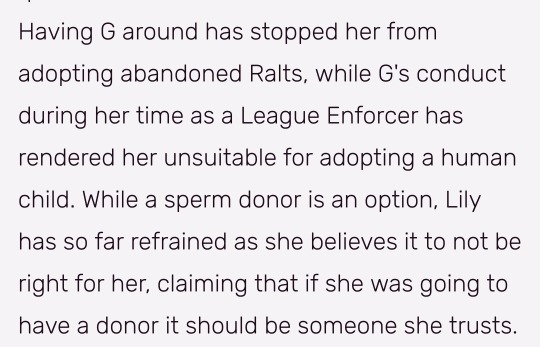
Every time I look, it makes me laugh. Though in seriousness she had to adopt Bonnie in the end and child protective services either doesn't consider Bonnie a human child or are fuckin sleeping real damn hard to not catch this.
Finally, and least fortunate implication of them all... Bonnie will grow up, and unless Lily can single-handedly end the stigma around trainers banging pokemon, she will grow up in a world that either fetishizes or despises her. She will have to look back at her creation, being born of G wanting to give Lily a replacement baby, and try to feel anything other than contempt as she tries to live in a society that actively hates her for existing. The butt of every beastiality joke. The byproduct of pokephilia that nobody decent wants anything to do with. All by herself, sad, bitter, angry...
There's also the fact that she regularly causes property damage. Somebody needs to control their kid. Baking ram sticks and removing hours of dying work and saying it was bad, zero manners, be a parent, Lily...
#lily orchard#lily peet#lily orchard is a bad writer#lily orchard is a bad critic#lily orchard is garbage and here's why#pokemadhouse
14 notes
·
View notes
Text
The Decay of Yesterday: Chapter Fourteen {Viktor x Reader}
this is a reader-insert fic, but i hate the terms y/n, (name), etc., so i’ll be using the nickname “scout” in place of it! if that’s not your cup of tea, well, then this probably isn’t the story for you. hope you enjoy!
word count: 0.9k (i’m running out of ideas of how to get to point b if anyone wants to spitball and talk about this story)
masterlist
<- first chapter
<-previous chapter
next chapter ->
____________________________________________________________________________
Five years after the first outbreak
You stumble back so quickly you actually fall on your rear, head knocking against the chair wedged in front of the hospital bed.
He created the zombie plagues?
How?
Then you remembered
“We were scientists. We were trying to develop cures for terminal illnesses. Stuff like cancer, Alzheimer’s, Parkinson’s. Stuff like that. Viktor helped me create the idea, and together we founded Hextech.”
“Was it on purpose?” You whispered, and he recoiled as if slapped.
“Do you really think I would create this plague on purpose?!” He demands, and you flinch at the volume, almost telling him to quiet down before you remember that would be stupid with the number of zombies outside the door. They already knew you were there. So what was the point of keeping quiet? As long as they could smell you, they wouldn’t leave that door.
“No. I suppose not. Sorry.” You mumble, and he pinches the bridge of his nose. As if talking about this was painful for him.
He doesn’t say a word for nearly half an hour.
Until…
“She had stage three lung cancer.” He says suddenly from where he had slumped to the floor against the far corner of the room by the window. You press your back against the barricade, head against your knees as you wait for something.
For what, you don’t know.
For Jayce and Vander to come back?
For the undead to break through the door and kill you both?
You look up when he speaks, but he’s not looking at you.
“I had created an experimental treatment. A virus. One that would attack the cancer cells. Much like chemotherapy, but without the side effects. It was a magnificent idea. One that could save hundreds, even thousands of lives. ” He sounds proud at the thought, but the tone quickly dissipates and turns bitter. “It didn’t work.” He spits out as if the words taste foul.
“How did it fail?” You ask, morbid curiosity getting the better of you.
Deep in your mind, you don’t want to know.
You don’t want to know the details of how the zombie virus came to be.
You don’t want to know the ins and outs of what killed your parents.
“It mutated. The virus. It changed. It began to attack the brain stem and the brain itself. The first symptom was a coma. Then fever. Then death. Then reanimation. Sky reanimated a week after the initial injection. I didn’t even know the treatment mutated until the hospital was overrun.” He says and clenches his fist. “This is all my fault.” He hisses to himself.
You don’t have anything to say at that.
So you sit in silence.
That is… until the walkie-talkie squawks to life on Viktor’s belt.
“Viktor? Scout? Do you read me? Is everything okay?” Comes Jayce’s voice, and Viktor fumbles with the device and presses the button.
“Jayce? Where are you?” He asks, and you scoot closer, knees touching as you lean in to hear what Jayce is going to say. Viktor’s hair brushes your cheek, and you shiver, the soft strands a complete opposite to the mess on your own head.
“Vander and I are on the ground floor. Where are you?” He replies, and you shuffle to your knees, looking out the window to see if you can spot them.
No luck.
Viktor is talking.
“We’re on the second floor. Just down the hallway where we first came up, but the stairwell is blocked by more undead. We can’t get out.” He says succinctly, and you hear Jayce say something, presumably to Vander, who speaks next.
“How much supplies do you have left?” He asks, and you frown in confusion. What does that have to do with anything? You decide not to question it and check both of your packs anyway.
There’s barely enough for half a day. Maybe a day if you stretch it. The water is almost gone, and no one had thought to replenish your supplies before leaving. Because this was supposed to be a quick in-and-out trip.
Soon morning turns to afternoon. And afternoon turns to evening.
You are leaning against the barricade again, and Viktor is sitting once again against the wall under the window. The walkie-talkie is turned off, but not before Jayce reassures you that they will figure out something.
So you drown in the quiet.
“I’m sorry.” You say abruptly and Viktor looks up from where he had been staring into oblivion.
“For what?” He asks, wary and slightly incredulous.
“For how I’ve been acting toward you. You’re a good doctor.” You say and avoid his searching eyes. They narrow and his lips twist in a sneer.
“I don’t need your pity.” Is all he snaps and you bite back a retort.
He doesn’t need to hear that now. He’s clearly upset and you really aren’t the greatest at comforting people as shown by your sorry attempt at an apology.
So you don’t say anything else.
It was then that you spotted the window.
And got an idea.
____________________________________________________________________________
taglist (let me know if you want to be tagged!): @trfanglophile | @slasherflickchick | @blackswansociety | @cremthehive
#arcane viktor#arcane league of legends#arcane#viktor arcane#arcane viktor x reader#viktor arcane x reader#arcane viktor x you#arcane viktor x y/n#viktor arcane x you#viktor arcane x y/n#viktor x reader arcane#viktor x reader#the decay of yesterday#fairy writes
28 notes
·
View notes
Text
Did anything good happen in 2023? Yes!!
Sometimes, we all need a reminder that the world is not in a death spiral. This is a wonderful article from the Washington Post that shows huge and promising developments and it's worth reading.
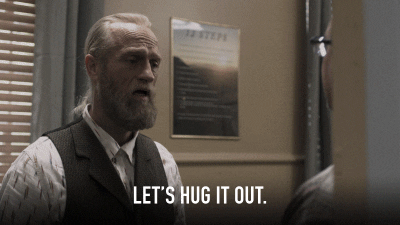
Research has indicated that uplifting news can provide an emotional buffer against distressing news and feelings of hopelessness — and even encourage optimism or action. So, in that spirit, here are some of the more uplifting developments you may have missed this year.
The WHO approved an effective new malaria vaccine.
In October, the World Health Organization approved a malaria vaccine — only the second time a vaccine against the potentially deadly disease has been created. The WHO said it expects the vaccine, which costs $2-$4 per dose and has been shown to reduce symptomatic cases by 75 percent after three doses within a year, to be available by the middle of 2024.
More than 600,000 people died of malaria in 2021, with children under 5 representing 80 percent of malaria deaths in Africa. The United States reports about 2,000 malaria cases every year, the Centers for Disease Control and Prevention says, with the majority of them contracted abroad.
Tedros Adhanom Ghebreyesus, the director general of the WHO, said the announcement gave him“great pleasure. ... I used to dream of the day when we would have a safe and effective vaccine against malaria. Now, we have two.”
The FDA approved a groundbreaking pill to treat postpartum depression
In the United States, the Food and Drug Administration also approved a number of potentially life-changing drugs, including a first-of-its-kind pill to treat postpartum depression, which affects up to 1 in 5 women. The severe and debilitating condition can cause pregnant and new mothers to experience intense hopelessness and, in rare cases, psychosis — and it can last for years.
The new drug is taken once a day for two weeks and, unlike the existing treatment of an IV injection that may take as long as 60 hours to administer in a health-care setting, it can be taken at home — greatly improving accessibility, especially for parents caring for a newborn.
While experts say the drug may not be suitable for all women with the condition and won’t be able to treat all aspects of a new mother’s mental health, they argue that the drug is nonetheless a convenient and fast-acting treatment, and is particularly useful in the early days after a birth, when parents and babies start bonding.
Two sickle cell disease treatments gained approval
In December, the FDA also approved two therapies for sickle cell disease, a rare and debilitating condition that affects around 100,000 Americans, most of them Black. The disease causes extreme, constant pain and can drastically cut the life span of those affected.
The new treatments are both gene therapies that have been shown in clinical trials to stop severe pain crises for most patients: One uses a harmless virus to insert a gene into the patient’s stem cells, while the other is the first medical treatment to be based on the gene-editing tool CRISPR.
Both are intensive, expensive procedures — and require chemotherapy, which has significant side effects. But patients who have received the treatments have spoken of its profoundly beneficial impact on their lives.Jimi Olaghere, a father of three who likened the pain caused by the disease to glass shards sawing back and forth inside his veins, said that after years of being unable to sleep at night because of pain, he has energy again, and that the treatment has enabled him for the first time to plan for a future with his family.
We learned more about dementia and memory loss — and how to prevent them
Scientists also made progress in understanding one of the biggest health concerns for countries with aging populations — dementia, which can have a devastating impact, robbing people of the ability to engage in daily tasks.
While there is no proven cure for dementia, scientific research has continued to find that there many steps we can take to reduce the risk of developing dementia.
One study published this year suggested that lifestyle habits, including regular mental and physical activity, eating a healthful diet, and regular social contact were linked with a slower rate of memory decline. Another found that living in areas with more natural green spaces was associated with lower rates of hospital admissions for diseases including dementia, while separate research indicated that the use of hearing aids could cut the risk of cognitive decline by nearly half.
The FDA also gave full approval, for the first time, to a drug that modestly slows Alzheimer’s disease. While difficult questions about safety, effectiveness and cost remain, many neurologists say that having a drug that slows Alzheimer’s is nonetheless a milestone after years of failed trials.
After 20 years, countries agreed a treaty to protect the ocean
Human health wasn’t the only area to see improvements this year. Even as scientists voiced concern about the state of Earth’s health, there were some positive steps to protect the planet.
In May, more than 190 countries agreed a major deal to protect the biodiversity of the world’s oceans outside of national borders, after more than two decades of talks. The United Nations adopted the treaty in June.
At present, only 1.2 percent of the high seas — which make up two-thirds of the planet’s ocean surface — are protected, leaving large stretches at risk from rising temperatures, overfishing, pollution, mining and other threats. The deal will allow nations to start creating new marine protection areas in the high seas for the first time, although it still may be years before U.N. member states formally adopt the agreement and are able to begin the process of designating the new zones. Even then, enforcement may be difficult.
But the agreement has been welcomed as a much-needed start on the path to protecting 30 percent of the planet’s land and sea by the year 2030, a goal announced at a U.N. biodiversity summit in late 2022.
Brazil deforestation falls after reaching 15-year high
Last year, The Post published a series of storiesshowing the fast pace of destruction of Brazil’s Amazon rainforest under then-President Jair Bolsonaro. During his presidency, the rate of deforestation of the Amazon rose to a 15-year high, and those responsible for the destruction acted with impunity.
Luiz Inácio Lula da Silva returned to the presidency in January this year. His first six months in office showed positive signs, as authorities drove thousands of illegal gold miners from Indigenous lands, and the government said deforestation dropped by 50 percent.
There are questions about how likely the president is to reach his goal of ending deforestation by 2030, especially given government plans for a large-scale railway project and to pave a 540-mile highway. And deforestation isn’t the only environmental issue facing Brazil, which has come under scrutiny for its reliance on oil as it announced plans to align itself with a coalition of major oil-producing nations, OPEC Plus.
But European countries and the United States have once again offered to restart funding — which was suspended under Bolsonaro — to help end deforestation in the Amazon. Resuming the program would be a significant step for a rainforest that stores billions of tons of carbon and pulls millions more out of the atmosphere every year.
Even in a year of difficult news, moments of humanity shone through
While suffering across the world may have dominated the headlines in 2023, this year also reminded us that kindness and generosity exist, even amid crises and tragedy.
In March, after tornadoes devastated Mississippi, a group of Ukrainian refugees made a 16-hour journey to distribute water to victims of the disaster. Many had only just arrived in the United States — and still had immigration forms to fill in or job interviews to prepare for — but hoped to help a community they felt faced a struggle similar to theirs.
“When they stop what they’re going through to help someone else in need, that to me is the definition of love,” Corie Jones, the deputy director of Volunteer Mississippi, told The Post.
And in October, as police officer Arizbeth Dionisio Ambrosio was clearing debris after Hurricane Otis swept Mexico, she came across a woman with a crying, hungry baby. Ambrosio, who was breastfeeding her own 1-year-old, offered to nurse the baby and was able to soothe the infant — a moment of empathy that was praised around the world, and led to her receiving a promotion.
Ambrosio told The Post she didn’t consider what she did to be anything heroic or out of the ordinary. “It was what I needed to do and I did it,” she said. “When you are in a situation like that, you do not think whether to help or not. ... I felt peace because I was with the baby giving him what he needed at the moment
Find the full story here.
#Good things in 2023#human acts of kindness in 2023#reclaiming the rainforest#protecting the world's oceans#new advances in port-partum depression#new meds for sickle cell anemia#new affordable Malaria vaccine#ways to cut the risk of dementia by 50%#reducing the risk of dementia
10 notes
·
View notes
Note
Personally I had always assumed that the way Shadow was going to "cure" Maria's disease was through his blood
Shadow is supposedly immune to all diseases, which, in biological terms, would probably indicate the existence of a nigh invincible immune system in his body. I'm no doctor, but theoretically if you could take some of Shadow's Ultimate White Blood Cells or whatever and inject them into Maria they COULD destroy the disease!
...or they could attack her regular cells, since they'd be dealing with a completely foreign and weaker biology. I like to believe that Gerald was performing some tests with blood samples from both Shadow and Maria before GUN put an end to things
That's... why I cited stem cells, lol. The stem cells harvested from savior siblings come from the blood of the umbilical cord.

...or they could attack her regular cells, since they'd be dealing with a completely foreign and weaker biology. I like to believe that Gerald was performing some tests with blood samples from both Shadow and Maria before GUN put an end to things
Just my layman's opinion, so take it with the biggest grain of salt, but I would think that if the condition is genetic in nature, chances are it'd need to be treated via genetic manipulation. Tampering with her immune system won't completely "cure" Maria unless the core issue is addressed. It's like how certain forms of anemia resist treatment because of a gene replication error that prevents iron absorption, rendering iron infusions a little like slapping a Band-Aid on the wound.
If the DNA replication error that results in her immune system malfunctioning isn't rewritten, or something along those lines, her immune system will continue to behave as it always has.
4 notes
·
View notes
Text
For patients battling diabetes, a group of Chinese scientists and clinicians may offer a glimmer of hope. For the first time in the world, a patient’s diabetes has reportedly been cured using cell therapy.
The patient, a 59-year-old man who had been living with type 2 diabetes for 25 years, was at serious risk of complications from the disease. He had a kidney transplant in 2017, but had lost most of his pancreatic islet function which controls blood glucose levels, and relied on multiple insulin injections every day.
“He was at great risk of serious diabetes complications,” Yin Hao, a leading researcher at Shanghai Changzheng Hospital, told Shanghai-based news outlet The Paper earlier this month.
The patient received the innovative cell transplant in July 2021. Eleven weeks after the transplant, he was free of the need for external insulin, and the dose of oral medication to control blood sugar levels was gradually reduced and completely stopped one year later.
“Follow-up examinations showed that the patient’s pancreatic islet function was effectively restored,” Yin said. The patient has now been completely weaned off insulin for 33 months.
The medical breakthrough, achieved by a team of doctors and researchers from institutions including Shanghai Changzheng Hospital, the Centre for Excellence in Molecular Cell Science under the Chinese Academy of Sciences, and Renji Hospital, all based in Shanghai, was published in the journal Cell Discovery on April 30.
“I think this study represents an important advance in the field of cell therapy for diabetes,” said Timothy Kieffer, a professor in the department of cellular and physiological sciences at the University of British Columbia in Canada.
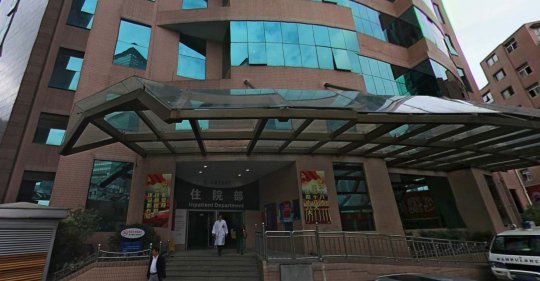
Diabetes is a chronic condition that affects the way our bodies convert food into energy.
What we consume is broken down into glucose – a simple sugar – and released into the bloodstream. Insulin, produced by the islets of the pancreas, is essential for regulating blood sugar levels.
In diabetes, this system is hijacked: either the body does not produce enough insulin, or it cannot use the insulin it produces effectively.
There are several types of diabetes, of which type 2 is the most common, affecting almost 90 per cent of sufferers. It is largely diet-related and develops over time.
Regardless of the type of diabetes, failure to maintain normal blood glucose levels over time can lead to serious side effects, including heart disease, vision loss and kidney disease.
According to the US Centres for Disease Control and Prevention, “there isn’t a cure yet for diabetes”.
Along with losing weight, eating well and taking medication, insulin is the mainstay of treatment for some, but this requires frequent injections and monitoring.
Scientists around the world are researching islet transplant as a promising alternative, mainly by creating islet-like cells from human stem cell cultures. Now, after more than a decade of work, the group of Chinese scientists has come a step closer.
The team used and programmed the patient’s own peripheral blood mononuclear cells, Yin said, which were then transformed into “seed cells” and reconstituted pancreatic islet tissue in an artificial environment.
While preclinical data from Kieffer’s team supports the use of stem cell-derived islets for the treatment of type 2 diabetes, the report by Yin and colleagues is, to Kieffer’s knowledge, “the first evidence in humans”.
Yin said the breakthrough was another step forward in the relatively new field of regenerative medicine – where the body’s own regenerative capabilities are harnessed to treat illness.
“Our technology has matured and it has pushed boundaries in the field of regenerative medicine for the treatment of diabetes.”
Globally, China has the highest number of people with diabetes. According to the International Diabetes Federation, there are 140 million people with diabetes in the country. Of those, about 40 million depend on lifelong insulin injections.
China’s diabetic population is disproportionately high, according to Huang Yanzhong, a senior fellow for global health at the Council on Foreign Relations.
In an article last year, he pointed out that while China accounted for 17.7 per cent of the world’s population, the country’s diabetic population made up a staggering quarter of the global total, placing a huge health burden on the government.
If this approach for cell therapy ultimately works, Kieffer said, “it can free patients from the burden of chronic medications, improve health and quality of life, and reduce healthcare expenditures”.
But to get there, he added, studies in more patients based on the findings of this Chinese study were needed.
6 notes
·
View notes
Text
Article Review - Frontotemporal Dementia
I was reading this article and wanted to tell you the interesting information that I learned from it:
1. Dementia is a well-known disease. However, there is a rare type of dementia called frontotemporal dementia (FTD) that affects those aged 45 to 64. It is different from types like Alzheimer’s as it causes behavioural changes rather than memory degradation. Examples of symptoms include inappropriate social manners, impulsive actions and difficulty expressing oneself. Currently, there is no cure for FTD and current treatment options are ineffective. About 40% of cases exhibit family history -> genetic influence. Genes linked to the gene are being studied to understand how this disease causes dysfunction of neurons and neural circuits. Interestingly, FTD has some links with amyotrophic lateral sclerosis (ALS), the latter of which can cause progressive muscle deterioration and fatality.
2. There is then an analogy introduced about genes as being a set of instructions for cells to follow to produce protein used in life functions. Mutated genes* can hence alter protein function to be lost or abnormal. In the case of FTD, mutations in genes coding for two proteins called tau (neuron stabilizer, forms clumps in diseased brain) and progranulin (regulates cell growth and lysosome** activity) is specific. Mutations in C9orf72 and the gene coding for TDP-43 (forms clumps in diseased brain) cause both FTD and ALS.
3. A particular gene mutation can either cause FTD, ALS or both, while not being observable for many years in affected individuals. Why? One possible reason apart from lifestyle and environment is modifier genes that determine if mutated genes will lead to disease (some protect against it, some promote it). Identifying these genes is important to cure neurodegenerative diseases including the two above.
4. How so? As an example, the writer shares their research experiences. They have worked on generating stem cell lines from FTD patients with mutated progranulin and C9orf72 that can form neurons that can be studied in controlled experiments to understand the disease processes and test potential treatments. Their team also uses fruit flies to identify modifier genes and then study their effects on neuron disease in FTD/ALS patients. They discovered a small subset of such genes aiding in molecular transport to and from a neuron’s nucleus as well as genes aiding in DNA repair. Using techniques like gene-silencing on these modifiers could be possible cures.
4. There are challenges understanding the behavioural changes that FTD causes. Yet, studies in mice have led to possible explanations for two symptoms: social withdrawal and lack of empathy. For the first symptom, two disease proteins in the same area of the brain are responsible, suggesting faults in the same neural circuit that could be reversed by injecting microRNA-124 molecules into the prefrontal cortex (region responsible for social behaviour). The second symptom is associated with weak synapse (regions where neuron contact is necessary for transmitting information) response in this cortex and increasing activity could help improve it. Future advancements aim to make FTD curable.
I was so fascinated by this report… anyone interested in neuroscience should give this article a go!
Disclaimer: This is purely a concise reflection on the points presented in the article. These are not my opinions at all. I am only posting knowledge.
* Genes with altered DNA sequences.
** Organelle in the cell that breaks down materials.
5 notes
·
View notes